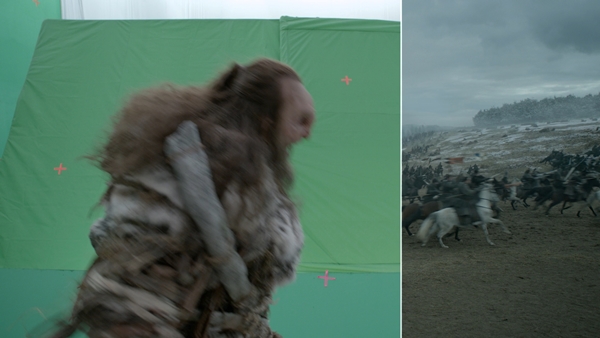The penultimate episode of Game of Thrones season six, Battle of the Bastards, was one of the most acclaimed in the show's history.
Centering around a large battle sequence straight out of Braveheart, the episode featured charging cavalry, giants, and a cast of thousands – or so it looked.
The VFX artists working on the battle sequence included a team from Iloura’s Melbourne office, who used a mix of VFX and hand-crafted animation techniques to realize the director's vision for the ep, led by VFX supervisor Glenn Melenhorst.
Iloura was selected to work on the episode after presenting the show’s VFX producer and supervisor, Steve Kullback and Joe Bauer, with a series of tests presenting photoreal CG horses and riders colliding with other horses, rendered from various points of view.
“Battle of the Bastards is shocking in its audacity,” said Kullback. “More shocking still that we pulled it off and so much credit for that goes to Iloura. We are up close and personal in this battle with CG horses and collisions right in front of the lens and we constantly needed to review Iloura’s shots side by side with the photography because it was hard to remember and even harder to see the difference between what was shot and what was added."
To get the shots right, Iloura reviewed video references of horse behaviour in steeple chases, jousting, racing and associated accidents. Witness cams of horses captured on set proved valuable as they provided multiple angles of reference for the same actions. Iloura also tapped its large library of animated clips to quickly assemble a blocking pass for shots, which became the foundation for what ended up on screen.
The animation work consisted of motion capture, rotomation and key frame for horses as well as soldiers, building into a library of custom interactions and motion behaviours that could be used for both close-up shots as well as crowd shots built in Massive.
The initial brief was for the Wildling and Bolton armies to face off and then collide, but once production began it became increasingly apparent that more complexity would be required, Iloura said.
Each army comprised smaller factions with custom armour, weapons, flags, banners, saddles, bridles, and every asset needed a clean, pre-battle version as well as a muddy version, a bloodied version and a very-muddy-bloody variant.
To achieve the high-density shots and photoreal quality required, Iloura revamped its pipeline and integrated systems. Its internal publishing tool ‘BOSS’ was improved to help with the number of assets, animation publishes and traffic going through the pipeline. Massive was integrated into the render and shading pipeline, and large sections were re-engineered to allow for more control and flexibility, with the pipeline moving completely to Alembic with rigging, animation and lighting achieved in Maya, FX in Houdini and compositing in Nuke using deep pixel compositing.
Iloura is part of Deluxe's global VFX group, with a team of 200+ in Australia and offices in Sydney and Melbourne.


